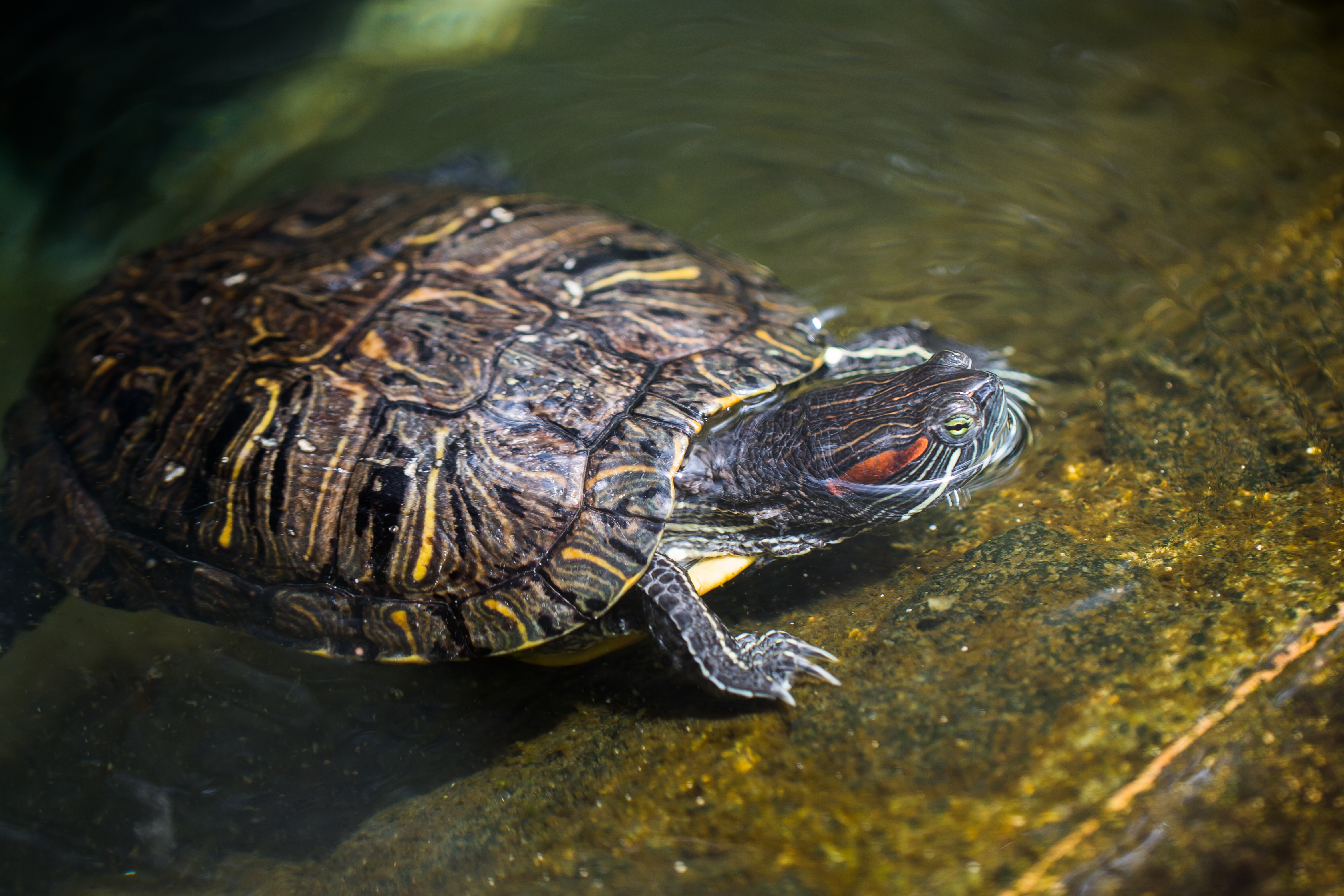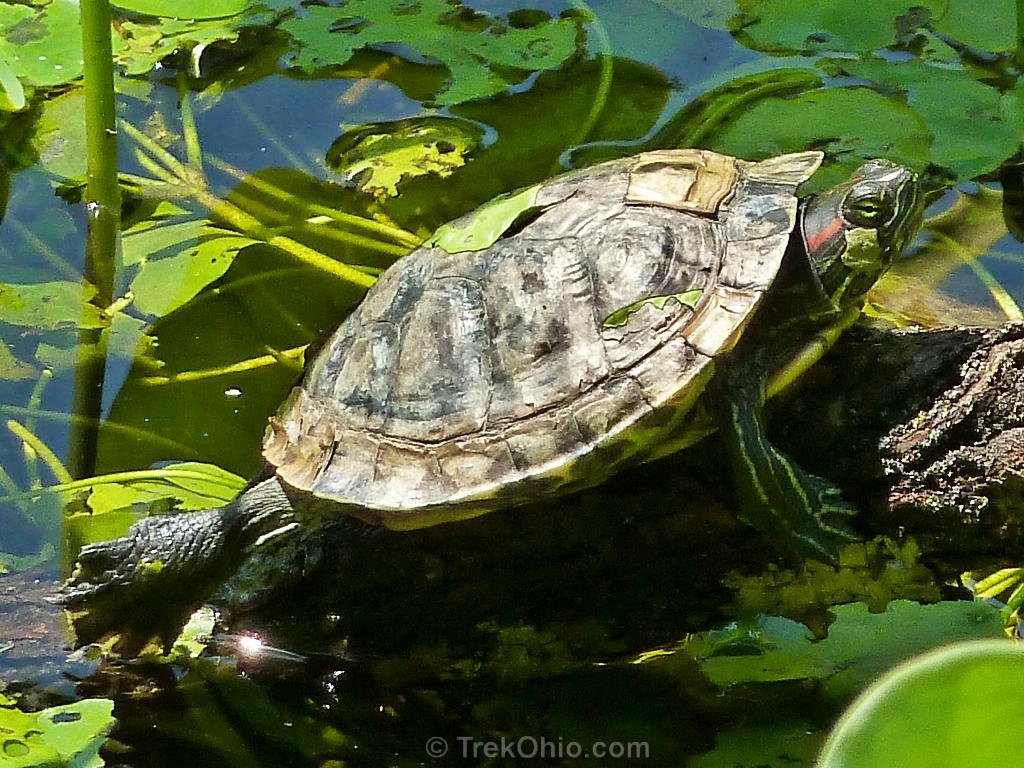Do Red Eared Slider Turtles Molt?
If you ever wanted to know what happens when a Red Eared Slider Turtle grows, you’ve come to the right place. In this article, we’ll take a look at how Red Eared Slider Turtles molt and how it affects their growth. We’ll also discuss how to care for them during the molting process and what to watch out for. So, if you have a Red Eared Slider Turtle in your home and have been wondering what it’s up to, read on and find out more!
Yes, Red-Eared Slider Turtles do molt. During the molting process, the turtle’s scutes (a type of hard, protective outer layer) will start to peel and flake off. The turtle’s skin may also start to look dull in color and may become wrinkled. This is necessary for healthy growth and development.

Do Red Eared Slider Turtles Molt?
Red Eared Slider Turtles, also known as Trachemys Scripta Elegans, are a popular breed of turtles known for their red stripes on the side of their heads. Like other reptiles, they molt periodically, shedding their old skin and scales in a process known as ecdysis. But the specifics of their molt cycle can vary, depending on a number of factors.
Factors That Influence the Red Eared Slider Turtle Molt Cycle
The molt cycle of a Red Eared Slider Turtle is influenced by several factors, such as temperature, humidity, diet, and age. Temperature is one of the most important factors, as turtles require a warm environment to molt properly. If the temperature is too low, their molt cycle will be delayed or disrupted.
Humidity is also important for Red Eared Slider Turtles, as their skin needs to be kept moist in order to shed its old layers. An environment with too much or too little humidity can also cause disruptions in their molt cycle.
Signs of Molting in a Red Eared Slider Turtle
When a Red Eared Slider Turtle is about to molt, it will typically start eating less and become less active. Its skin may also become dull and appear faded. This is because its body is preparing itself for the molt. After the turtle has been through its molt cycle, its skin will become brighter and its colors more vivid.
The Molting Process
During the molting process, a Red Eared Slider Turtle will shed its outer layers of skin, which can take anywhere from a few hours to several days. It is important to make sure the turtle is provided with a warm and moist environment during this process, as it is important for the turtle to be able to shed its skin in one piece.
After Molting
Once the Red Eared Slider Turtle has completed its molt cycle, it will need some time to recover. During this period, its appetite will return and its colors will become more vibrant. It is important to monitor the turtle closely during this time, as it may be more susceptible to infection or injury.
Molting Frequency
Red Eared Slider Turtles typically molt every few months, although the exact frequency can vary depending on age and other factors. Younger turtles tend to molt more frequently than adults, and the molt cycle can also be affected by diet, temperature, and humidity.
Nutrition During the Molting Process
Molting can be taxing on a Red Eared Slider Turtle, so it is important to make sure the turtle is provided with a healthy and balanced diet during this time. The turtle should be fed a variety of fruits, vegetables, and proteins in order to ensure it has all the necessary nutrients for a successful molt.
Behavior During the Molting Process
During the molting process, a Red Eared Slider Turtle may become lethargic and less active. It is important to make sure the turtle is not disturbed during this time, as the molting process can be very stressful for the turtle. It is also important to make sure the turtle has plenty of clean, warm water to stay hydrated during this time.
Caring for a Red Eared Slider Turtle After Molting
After the turtle has completed its molt cycle, it is important to monitor it closely. The turtle should be provided with a healthy diet, access to clean water, and a warm and humid environment. Additionally, it is important to make sure the turtle is not handled too roughly, as its skin may still be sensitive from the molt.
Common Problems During Molting
The molting process can be difficult for a Red Eared Slider Turtle, and there are a number of potential problems that can arise during this time. These include infections, dehydration, and skin damage. If any of these problems arise, it is important to seek veterinary care immediately.
Preventing Problems During Molting
One of the best ways to prevent problems during the molting process is to make sure the turtle is provided with a healthy diet, access to clean water, and a warm and humid environment. Additionally, it is important to monitor the turtle closely during this time and to seek veterinary care immediately if any problems arise.
Related Faq
Do Red Eared Slider Turtles Molt?
Yes, red eared slider turtles do molt. Molting is a natural process in which the turtle sheds its outer layer of skin and shell. This process helps the turtle to grow and replaces any worn out or damaged parts of its shell. Molting usually occurs several times a year and can take anywhere from a few days to several weeks to complete.
During the molting process, the turtle may become lethargic and stop eating for a few days. It is important to monitor the turtle during this time and make sure it is still safe and healthy. Additionally, it is important to provide the turtle with a warm and humid environment to help facilitate the molting process.

Shell Peeling on Red Eared Slider Turtle | Cengkerang Kura-Kura Brazil
The answer to the question of whether red eared slider turtles molt or not is a definite yes. As with other reptiles, red eared slider turtles shed their old skin as they grow, a process called molting. Molting is a natural and essential part of their growth and development, and it helps to keep them healthy and strong. So, if you own a red eared slider turtle, be sure to keep an eye out for signs of molting and make sure that it has the proper environment and nutrition to support a successful molt.

